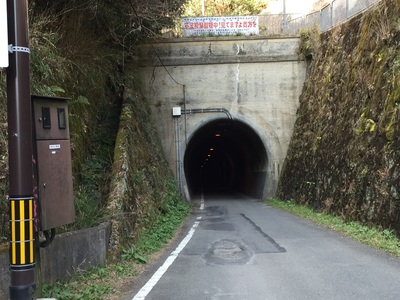The article below first appeared in Japan Review 33 (Special Issue: War, Tourism, and Modern Japan, 2019: p. 271–297)
Down in a Hole: Dark Tourism, Haunted Places as Affective Meshworks, and the Obliteration of Korean Laborers in Contemporary Kyoto
by Andrea de Antoni
This article provides an analysis of the relation between tourists’ experiences, affect, and bodily perceptions, together with processes of remembering and forgetting, focusing on (dark) touristic practices in haunted places in contemporary Japan. It highlights the social features of oblivion, processes in the creation of memories and discourses of war, and their entanglement in the “meshwork” that constitutes a particular place. I draw on ethnographic data of a guided ghost tour that visits Kiyotaki Tunnel, one of the most renowned haunted places in Kyoto. I describe tourists’ experiences, analyze the rumors about the haunting, and show that, among the locals, memories of the death of and discrimination against Korean laborers in the tunnel were strategically forgotten. Yet, these memories were “unearthed,” appropriated and spread on the internet by visitors, attracted by the haunting. I point out that haunted places emerge as “affective meshworks” primarily as a result of bodily correspondences with affordances in the environment, rather than from narrative and belief, and that (dark) touristic practices can contribute to the construction of new discourses, thus unsettling power relationships. I argue that a focus on affect in shaping meshworks of bodies, environments, memories, and discourses through (dark) touristic practices, can provide an understanding of the experiences of visitors to places related to war and death, and that visitors contribute to the construction of new memories and discourses.
To see the Academia site for this abstract, please click here.
******************

The following is taken from the Hiding from Japanese Ghosts website, which carries numerous pictures including the one above.
Internationally famous for being one of the most mysterious and haunted destinations of Japan, Kiyotaki Tunnel (清滝トンネル ) is the single-lane route connecting northern Arashiyama to the neighbouring town of Sagakiyotaki. With a history of violence, ill-omens, and suicide, Kiyotaki Tunnel is a hub of apparition sightings, bad luck, and cautionary tales.
Originally part of the Atagoyama Railway built from 1927 – 1928, Kiyotaki Tunnel is roughly 500 metres in length, and it is claimed the tunnel was constructed by slaves (the term ‘slave’ is a loose translation as the workers were legally employed without pay). There are a number of reported fatalities including those of workers who succumbed in accidents or harsh working conditions, victims of railway incidents, and people who were executed around the area. It is said the spirits of these fatalities can be seen wandering the tunnel at night. In conjunction to rumours stating the tunnel is 444 metres in length (‘4’ being an unlucky number for its reading of ‘shi / 死’, seeing spirits reflected in the road mirrors situated outside the tunnel entrances or in any car mirrors is said to bring about a violent, painful fate. There are also claims the traffic signals outside the tunnel can change suddenly from red to green at night, causing accidents with oncoming traffic.
The area is said to be a popular suicide spot due to the woodland seclusion and sturdiness of the trees above the tunnel. There is a rumour of a woman who leapt to her death from the road located above the tunnel entrance, and there are stories of still being able to see her spirit. As well as the above, sources also claim:
- ‘scary’ incidents occur late at night when entering the tunnel
- a woman’s scream can be heard at night from the forest around the area
- the length of the tunnel changes when making a return trip (though, it can be argued the slope changes depending on which side of the tunnel entered; Arashiyama to Kiyotaki slopes downwards, making it deceivingly shorter)
- a woman wearing white is known to run from the tunnel and jump on the bonnets of cars waiting at the traffic signals
- dizziness, nausea, and headaches can occur while travelling through the tunnel (though, this may be due to poor ventilation and a build up of exhaust fumes)
- it is warned all of the ghost activity occurs at night, and an alternative route is recommended
